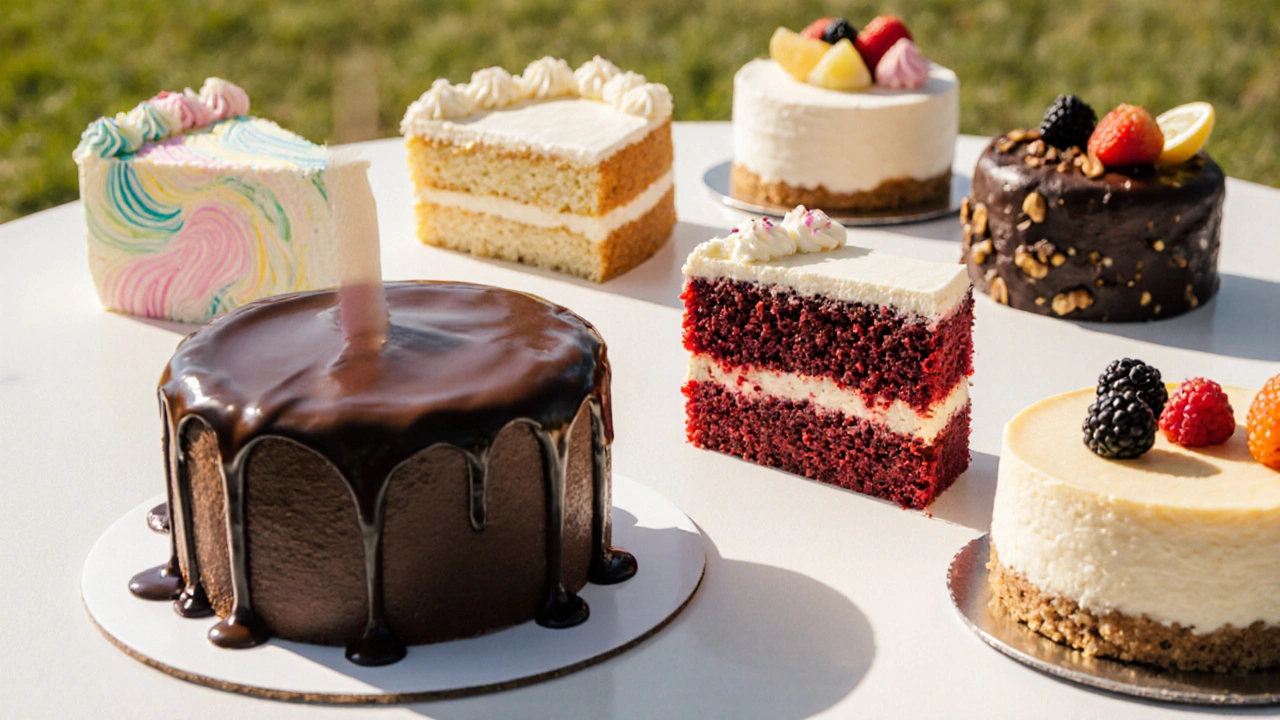
Which Cake Tastes the Best for a Birthday Celebration?
Discover the top birthday cakes, compare flavors, textures, and frosting to pick the most delicious cake for any celebration.
When exploring top cake flavors, the most popular and crowd‑pleasing taste profiles for cakes, ranging from classic vanilla to bold espresso. Also known as favorite cake tastes, they help bakers decide which flavor will make a celebration unforgettable. Vanilla, a neutral, creamy base that pairs well with almost any frosting or fruit is the go‑to for beginners and for weddings because its subtlety lets decorations shine. Chocolate, a rich, indulgent option that works from milk to dark and often carries a hint of coffee or orange dominates birthday parties and dessert bars. Fruit, flavors like lemon, strawberry or raspberry that add bright acidity and seasonal appeal keep menus fresh throughout the year. Together, these flavors illustrate that top cake flavors encompass classic profiles, require ingredient balance, and influence seasonal trends.
Most of the articles on our site touch on desserts that rely on a solid flavor foundation. For instance, a perfect pavlova needs a light, airy meringue that pairs best with fresh fruit toppings—think raspberry or passionfruit, which are essentially fruit‑based cake flavors. Cheesecake debates (baked vs. no‑bake) often revolve around the cream cheese base, but a hidden hero is the flavoring: lemon, chocolate swirls, or caramel drizzle can turn a plain slice into a standout. Fudge lovers learn that adding espresso or a pinch of sea salt elevates the deep cocoa notes, showing how a single flavor tweak can change texture perception. Even cookie tips stress the importance of brown sugar versus white sugar for flavor depth, mirroring the same principle bakers use when choosing a cake’s primary taste.
When you pick a flavor, think about the whole dessert ecosystem: the frosting, the filling, and the occasion. A red‑velvet cake, for example, leans on cocoa and a subtle tang from buttermilk—its flavor is best highlighted with a classic cream cheese frosting and not overwhelmed by additional chocolate. On the other hand, a lemon‑populated carrot cake thrives on spice (cinnamon, nutmeg) plus citrus zest, so a light honey‑sweet glaze complements rather than competes. Seasonal trends also matter; pumpkin and spice dominate fall, while fresh berries dominate spring. Understanding these connections helps you avoid mismatched pairings like chocolate frosting on a lemon cake, which can muddy the palate.
Practical tips for selecting the right flavor start with a taste test. Bake a small “sponge” of each candidate, add a dab of the intended frosting, and note the balance. Remember that flavor intensity can shift after chilling—chocolate deepens, citrus brightens, and spice mellows. If you’re catering to a crowd, offer a duo: a safe classic like vanilla‑buttercream and a bold option such as espresso‑chocolate ganache. This strategy mirrors the way our posts cover both straightforward recipes (like basic cookies) and more adventurous ones (like vegan mithai), giving readers a spectrum of difficulty and creativity.
Below you’ll find a curated mix of articles that dive deeper into the science, technique, and fun behind these flavors. From the perfect pavlova ingredients to the truth about baked versus no‑bake cheesecake, each piece adds a layer of insight that will help you master the art of flavor selection. Whether you’re a novice looking for a reliable vanilla base or an experienced baker hunting the next bold coffee‑infused creation, the collection offers enough variety to inspire your next cake masterpiece.

Discover the top birthday cakes, compare flavors, textures, and frosting to pick the most delicious cake for any celebration.